Ask a motorcycle enthusiast who lived through the 1970s to name the best bike of that memorable two-wheeled decade, and they’re likely to mention a multi-cylinder Honda or Kawasaki, or perhaps a glamorous Italian V-twin or triple. Inquire about the best one they’ve actually ridden, however, and the answer is far more likely to be Yamaha’s RD350.
Half a century ago, Yamaha’s two-stroke parallel twin was the ultimate young rider’s superbike – quick, exciting, and relatively inexpensive. The Japanese firm produced a string of excellent two-stroke twins of various capacities during that fast-changing decade, but it was arguably the RD350, launched in 1973, that really hit the mark.

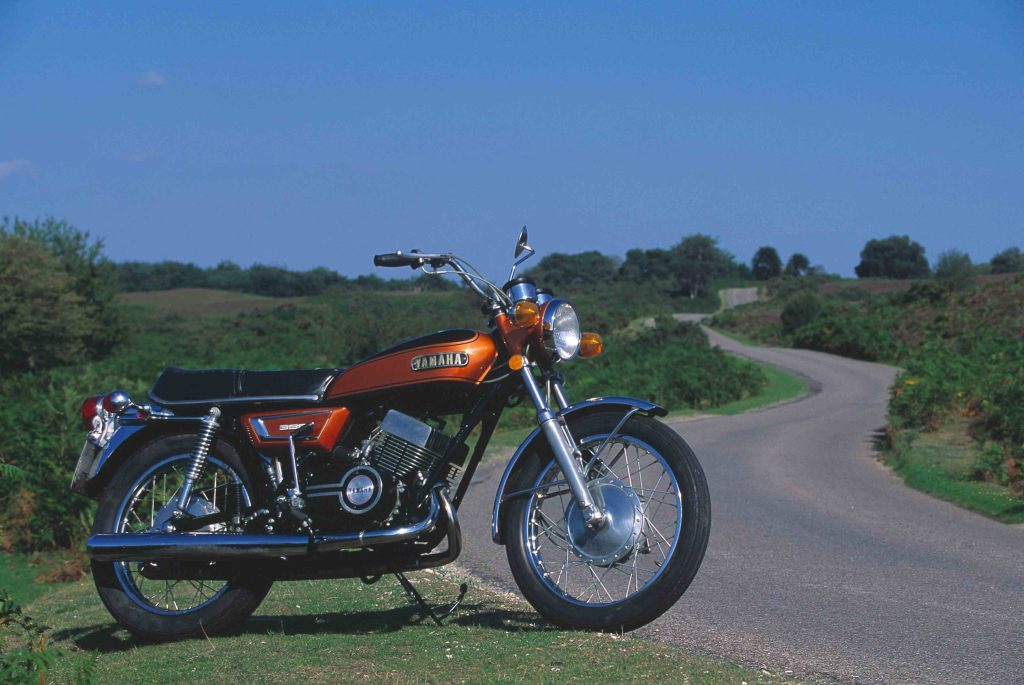
Those RD initials stood for Race Developed, and helped differentiate the new twin from its similarly styled predecessor, the YR5. In the RD350’s case the slogan was justified; Yamaha’s TZ two-stroke twins had dominated club- and national-level 250cc and 350cc racing worldwide for several years, to the benefit of its street bikes.
Yamaha had won the last three 250cc world championships, too, through British riders Rod Gould and Phil Read, and Finnish star Jarno Saarinen. And although Giacomo Agostini still held the 350cc title on a works MV Agusta, the TZ350’s many victories included Don Emde’s Daytona 200 triumph in 1972, and Saarinen’s win on the same Florida banking a year later.
Yamaha’s road-going twins, which were air-cooled, unlike the liquid-cooled TZ racers, had a distinguished history of their own. The RD350 was developed from the YR5, which had been launched in 1970 and in turn traced its design back several years further to the firm’s first 347cc model, the YR1. The engine’s cylinder dimensions and 180-degree crankshaft arrangement had remained all that time.
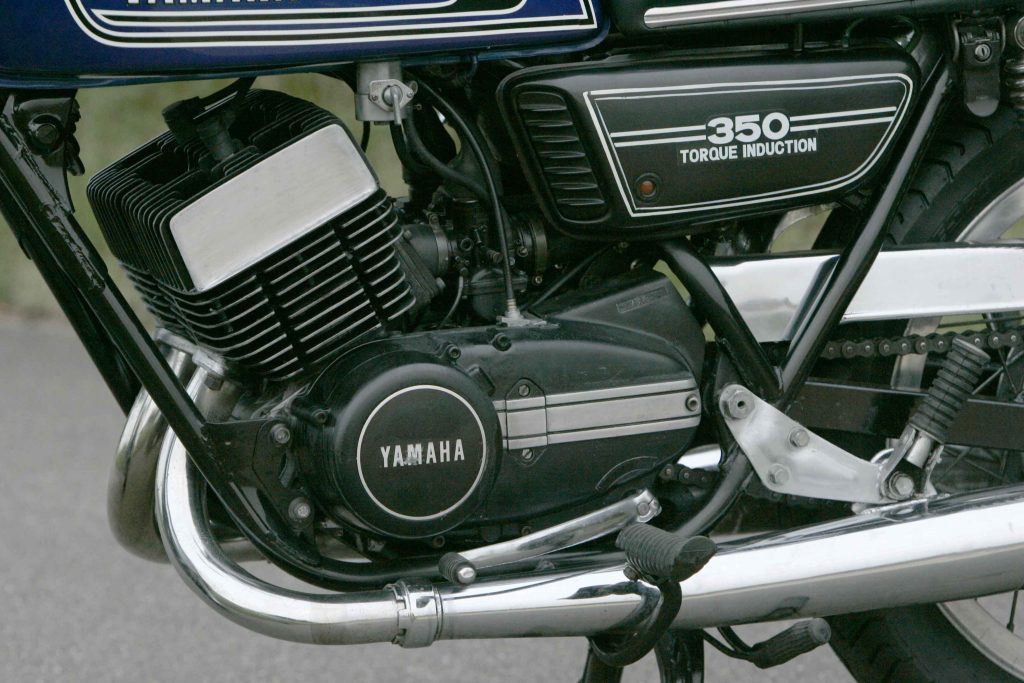
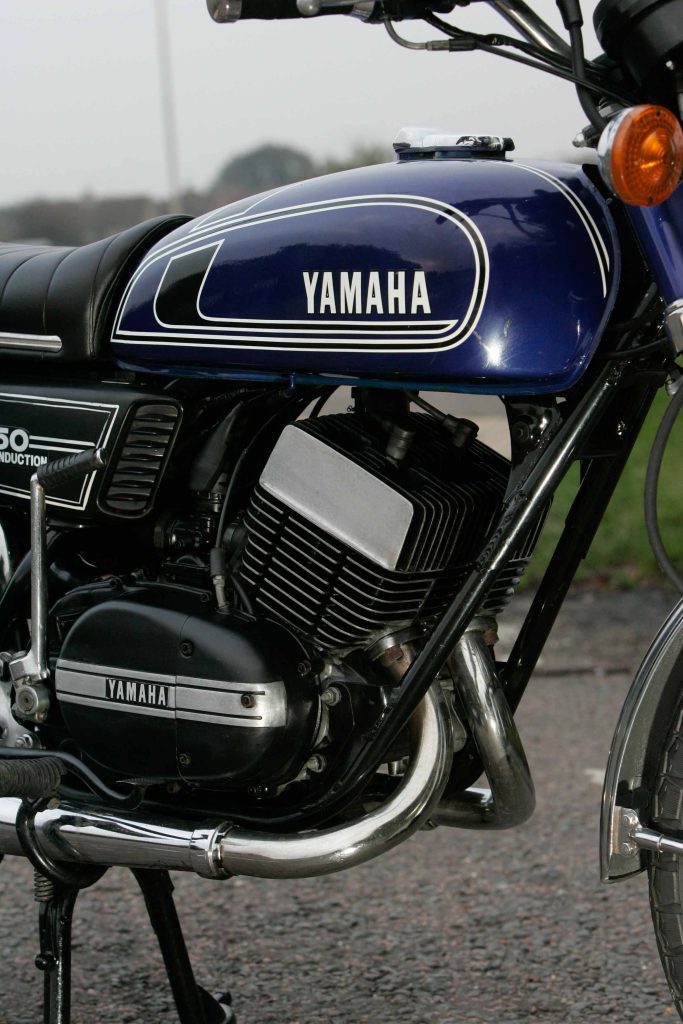
The RD350’s main engine-related innovation was its reed-valve intake system, called Torque Induction by Yamaha. The reed valves, one located between each Mikuni carburettor and its cylinder, improved intake efficiency by reducing the amount of mixture that was spat back.
As one contemporary tester put it, Torque Induction “allowed hairy intake timing without the motor suffering from low-speed indigestion.” This allowed Yamaha to boost top-end power while giving useful performance and cleaner running at low revs. The RD350’s peak output of 39bhp at 7500rpm was a handy three horses up on the YR5’s figure.
The RD also incorporated Yamaha’s Autolube system rather than requiring oil to be added to its fuel by hand, as was still common at the time. In most markets, the bike gained a six-speed gearbox, with the now-familiar left-foot change and one-down, five-up shift pattern, although bikes sold in the UK had the top ratio blanked off.
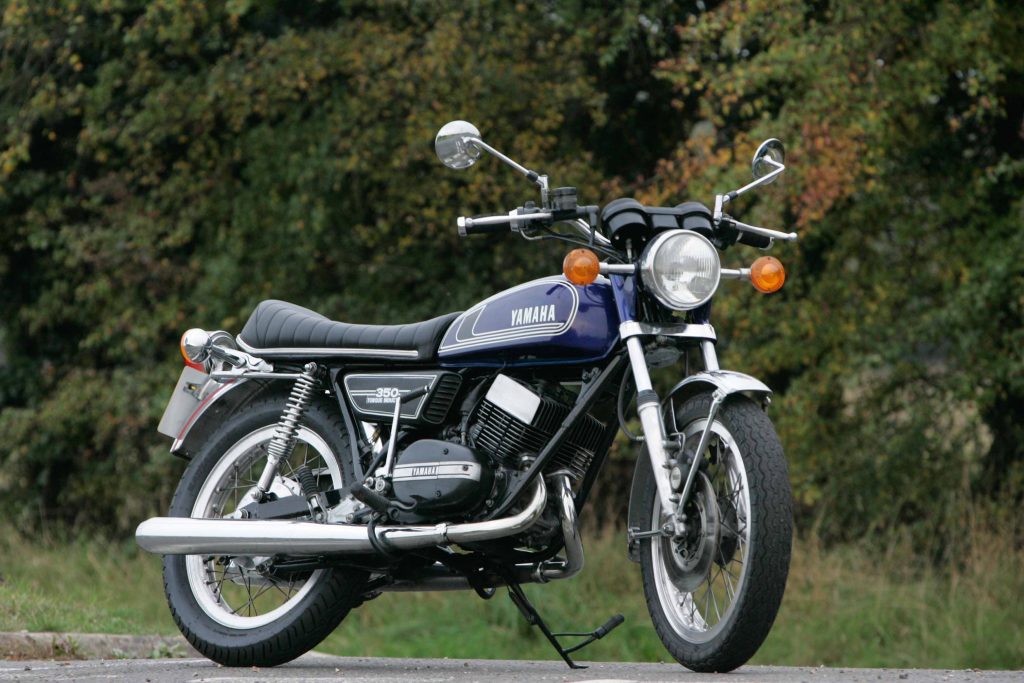
Chassis layout was mostly similar to that of the YR5, based on a twin-downtube steel frame that held typically skinny front forks, plus twin shocks that were adjustable for preload. The main change was the front brake: a single disc in place of the old twin-leading-shoe drum.
Styling owed much to previous Yamahas, including the YR5, but a larger fuel tank, a longer seat, and a black-finished engine gave a more substantial appearance. Although the RD’s raised bars and fairly forward-set footrests offered little clue about its sporty character, it was a lean and attractive machine.
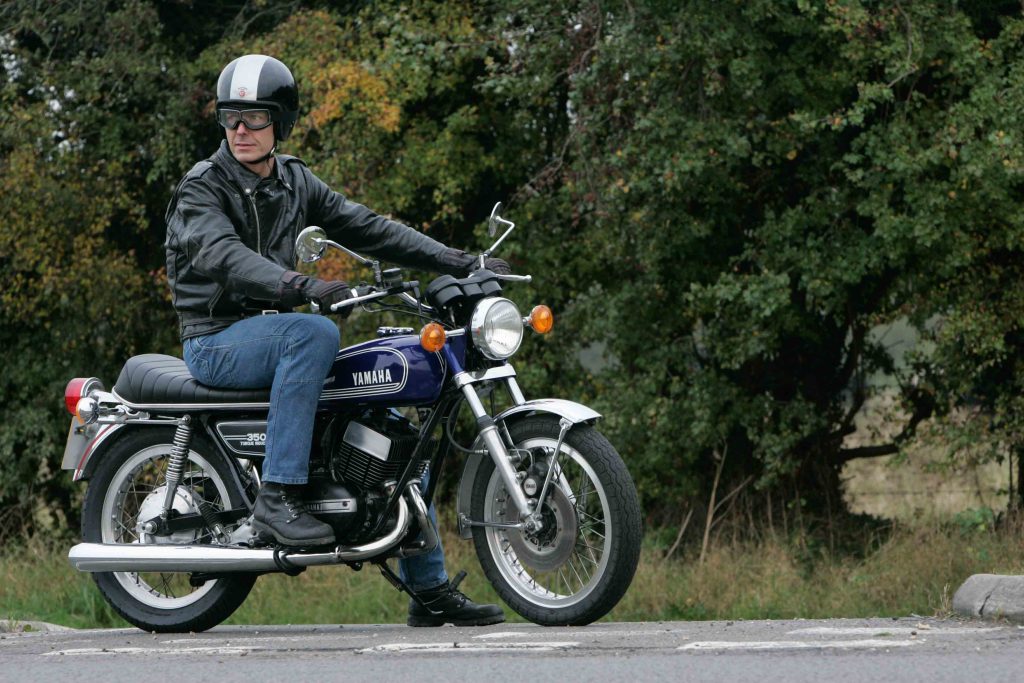
The borrowed 1974 model I rode looked almost new, apart from a couple of minor marks on its blue tank. It fired up easily, requiring just one or two gentle prods of the kickstarter before bursting into life with an evocative blend of exhaust crackle and two-stroke fumes.
My first impression was of how small and light the Yamaha felt, which is no surprise given its short wheelbase and dry weight of just 143kg. This might have been a race-developed sports machine, but it was docile and easy to ride. The wide handlebars and generous steering lock combined to make it effortlessly manoeuvrable in town.
Also contributing to the RD’s ease of use was its smooth low-rev performance, which was notably better than that of its YR5 predecessor. Although the response to a tweak of the throttle at 4000rpm or below was gentle, the Yamaha pulled cleanly in the lower gears, with no sign of the plug-fouling tantrums with which some of its predecessors had punished gentle treatment.
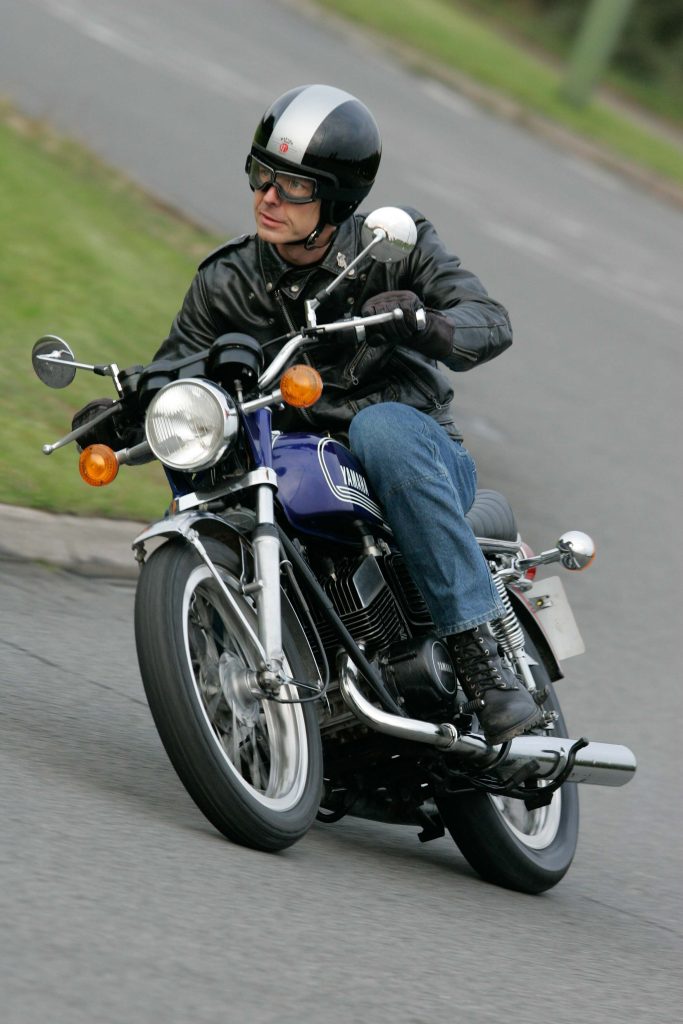
Not that I let the Yamaha have an easy time for long, because the moment it reached 5000rpm, the RD350 was transformed. Its exhaust note hardened from a flat drone to an excited zing, and the bike leapt forward with enough urgency to make me tighten my grip on those wide bars. The tacho needle flicked round toward the 8500rpm redline, and my left boot jabbed repeatedly at the gear lever to keep the motor in its power band.
The little twin certainly responded with enough enthusiasm to make me understand why the tester from US mag Cycle Rider wrote that “The performance and acceleration of the RD is nothing short of amazing.” But I didn’t share this impression: “The power-to-weight-ratio is so great that if one isn’t careful he will unexpectedly find the front end lofted quite high in the air when accelerating hard in a low gear.” If that tester pulled unplanned wheelies, he must have been mighty sharp with the throttle…
Even so, using all that power sent the Yamaha charging past an indicated 90mph despite its unhelpful high-barred aerodynamics, and some testers reported 100mph-plus top speeds, although the true figure was generally just short of the ton. That high-speed reputation helped the RD350 outsell rivals, including Kawasaki’s S2 350 and Suzuki’s GT380 in most markets.
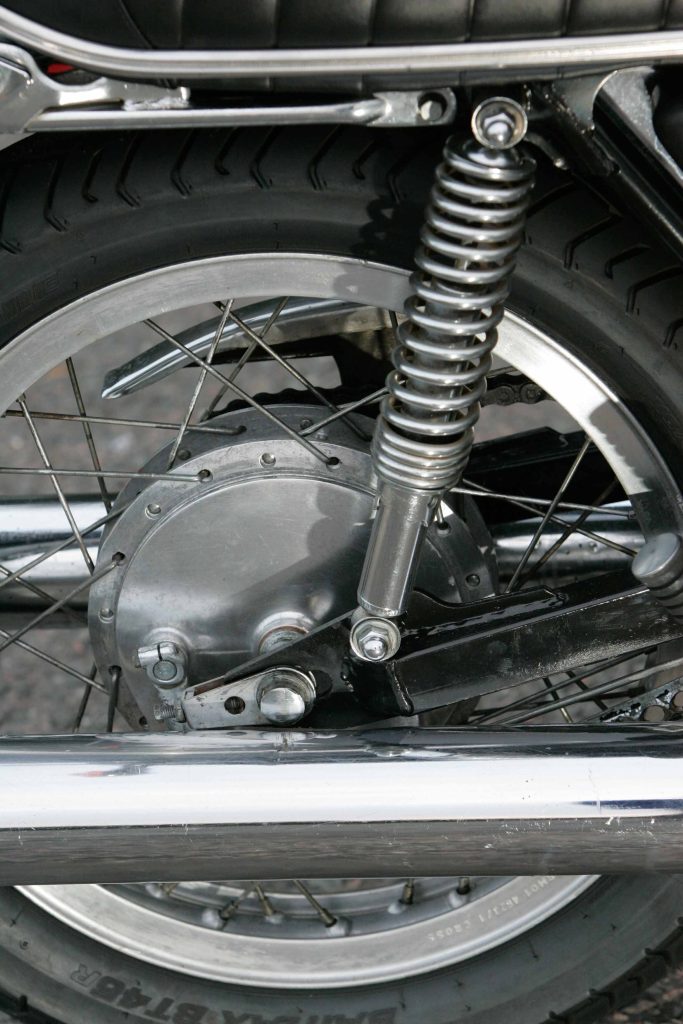
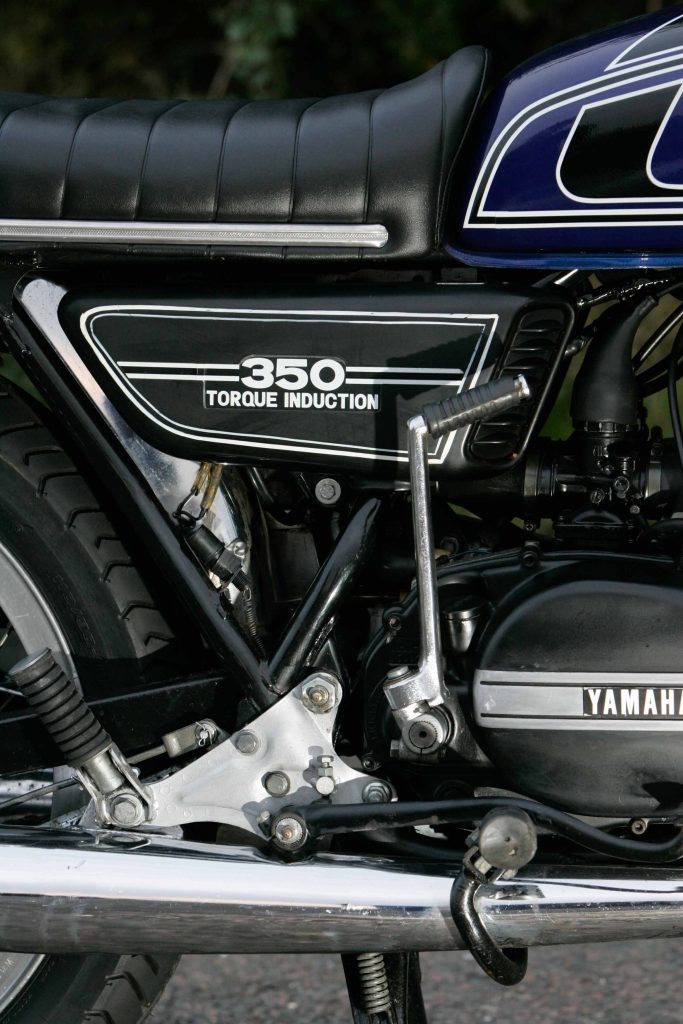
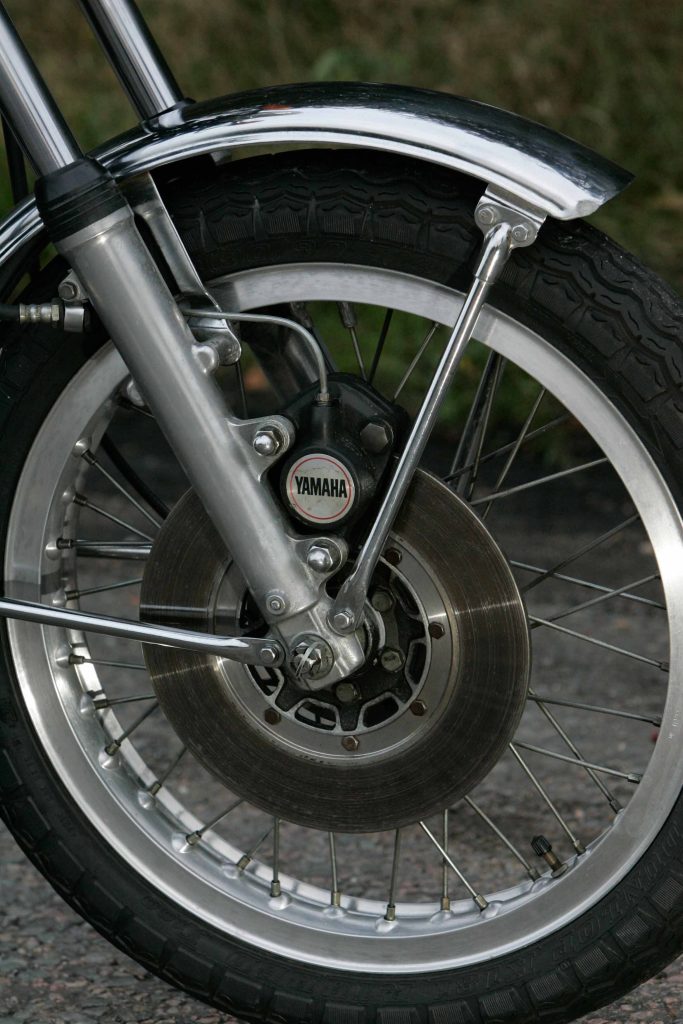
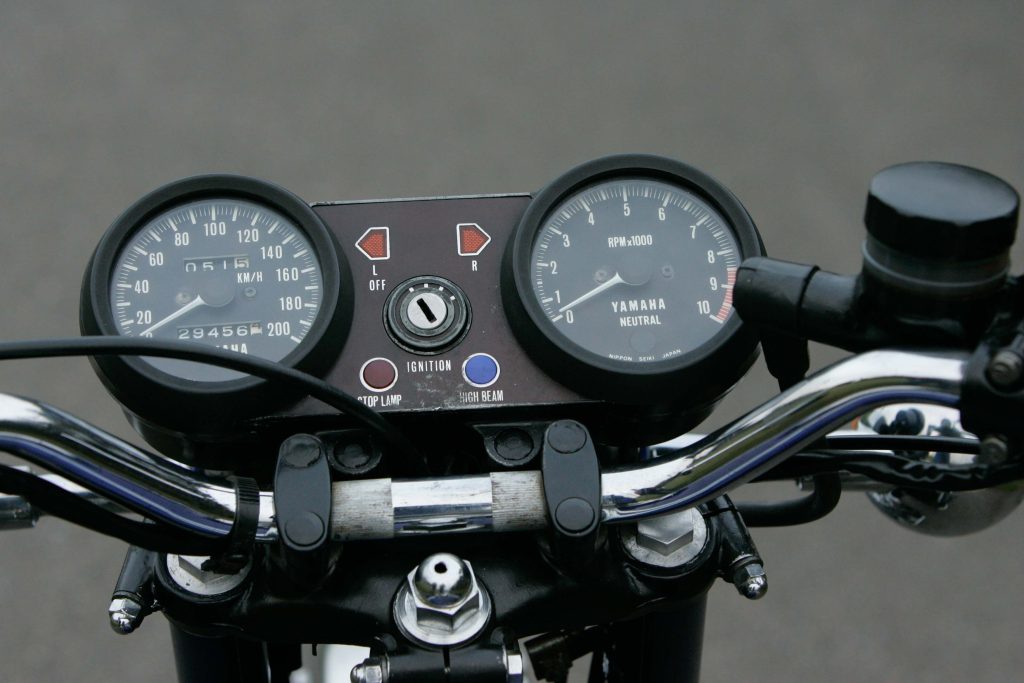
One slight downer was that above about 6000rpm, the Yam passed a fair bit of vibration, especially through its seat, which made the engine’s incessant demand for revs tiresome at times. Contemporary reports generally rated the RD very smooth, so either I’m less tolerant than those riders or this bike had understandably got a little rougher in its middle age. Back in the 1970s, more testers seemed more concerned by the two-stroke’s predictable thirst for fuel.
This RD’s chassis had held up very well, and my thoughts on its quick, occasionally over-sensitive but generally stable handling pretty much tallied with comments written when it was new. Its short wheelbase and light weight meant it could be flicked into bends with the merest nudge on those wide bars. And the Yamaha gave a firm, reasonably well-controlled ride without being too harsh over bumps.
That remained true even when it was ridden hard, as the tester from another US mag, Cycle Guide, enthused: “The first time you really stuff the 350 into a tight corner, you begin to understand about its road racing ancestry. You enter the corner wondering if you’re going to make it; you leave the same corner wondering why you didn’t enter it faster.”
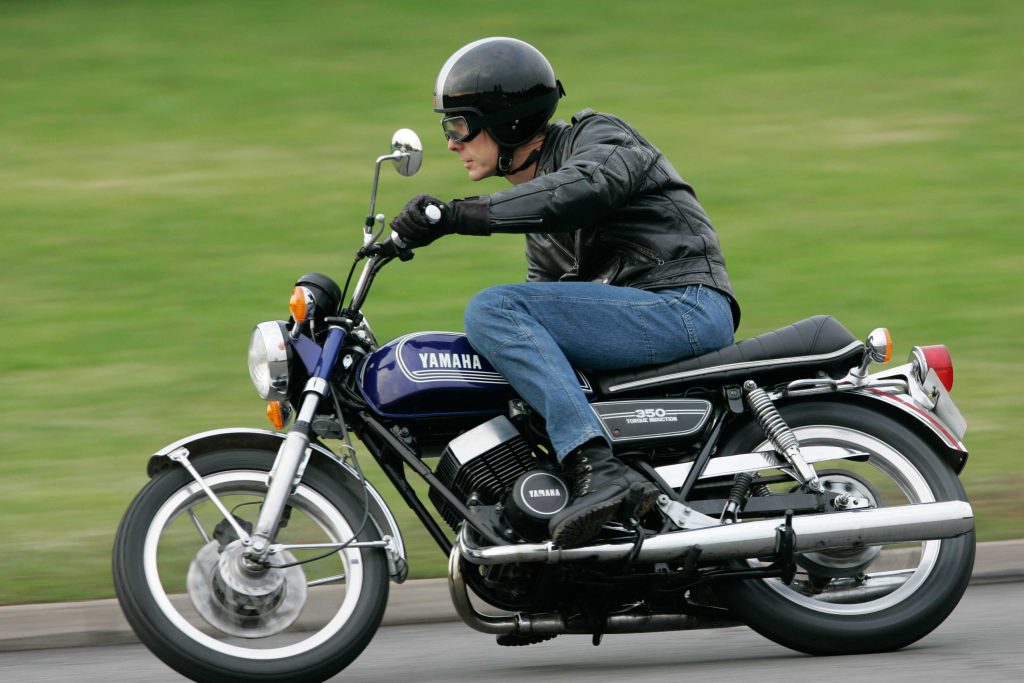
I didn’t get quite so aggressive in the bends on this elderly RD, but was happy to make good use of its relatively modern tyre combination of Avon front and Bridgestone rear rubber, both of which were doubtless superior to its original fitment. And I was equally impressed by the front disc brake, which stopped the Yamaha abruptly, with no hint of grab.
The disc reportedly even worked well in the wet, unlike many contemporaries, and it combined with the reliable rear drum to give the best stopping performance that Cycle magazine had ever recorded. Contemporary testers also enthused about the high-quality finish, neat switchgear, and even the hinged and lockable fuel cap. Seat comfort was another matter, but for a sporty middleweight the RD was impressively practical.
All in all, the RD350 was brilliantly lively, capable, and fun to ride – this example very much included – I thought, as I followed its headlight beam back toward base on the last leg of my ride. Then the Yamaha suddenly slowed to a gentle halt at the roadside, felled by an elderly battery that couldn’t handle the lights’ demands.
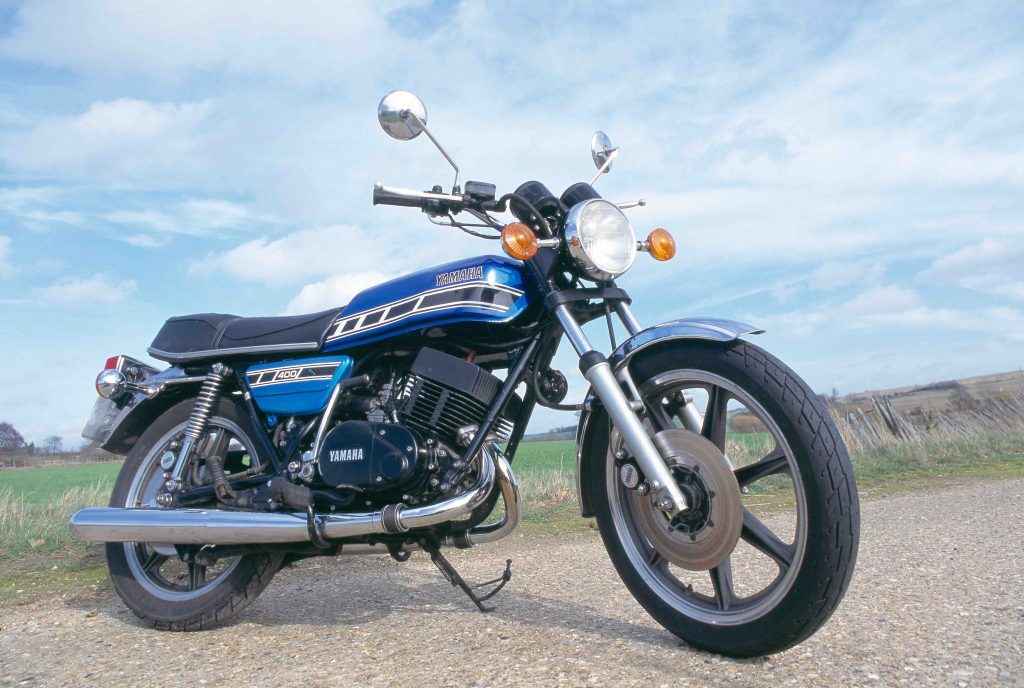
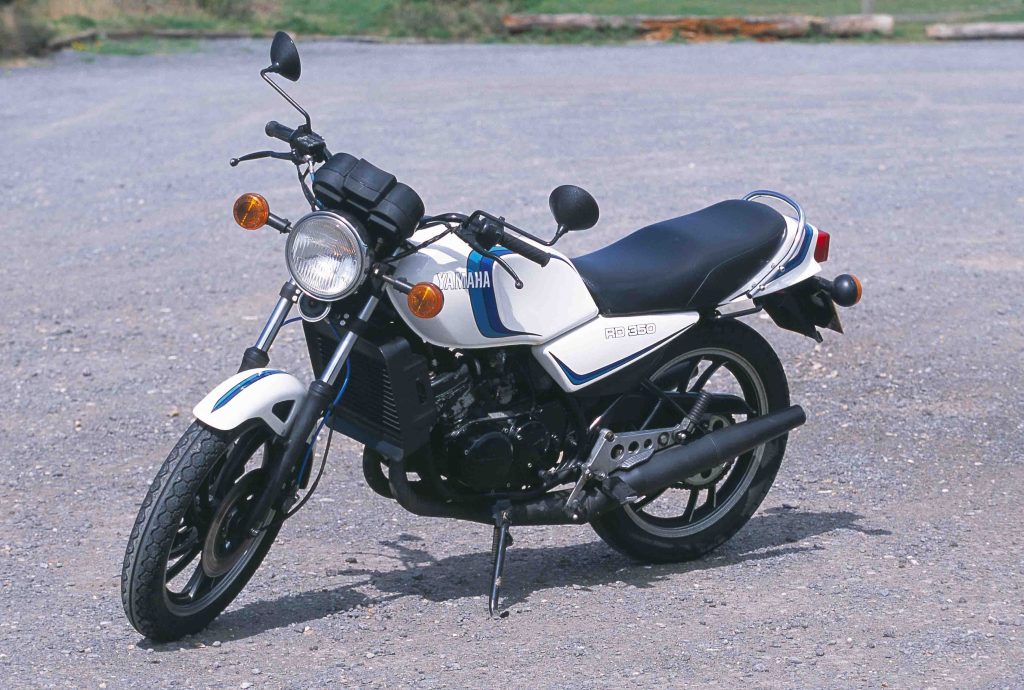
So the RD350 ended up being trucked home in disgrace, but that shouldn’t diminish the reputation of a model that fully deserves its classic status. The RD400 that followed it in 1976 was even stronger and more powerful; the liquid-cooled RD350LC of five years later was better still. But there’s something very special about the air-cooled RD350 – the bike with which Yamaha’s two-stroke twins came of age.

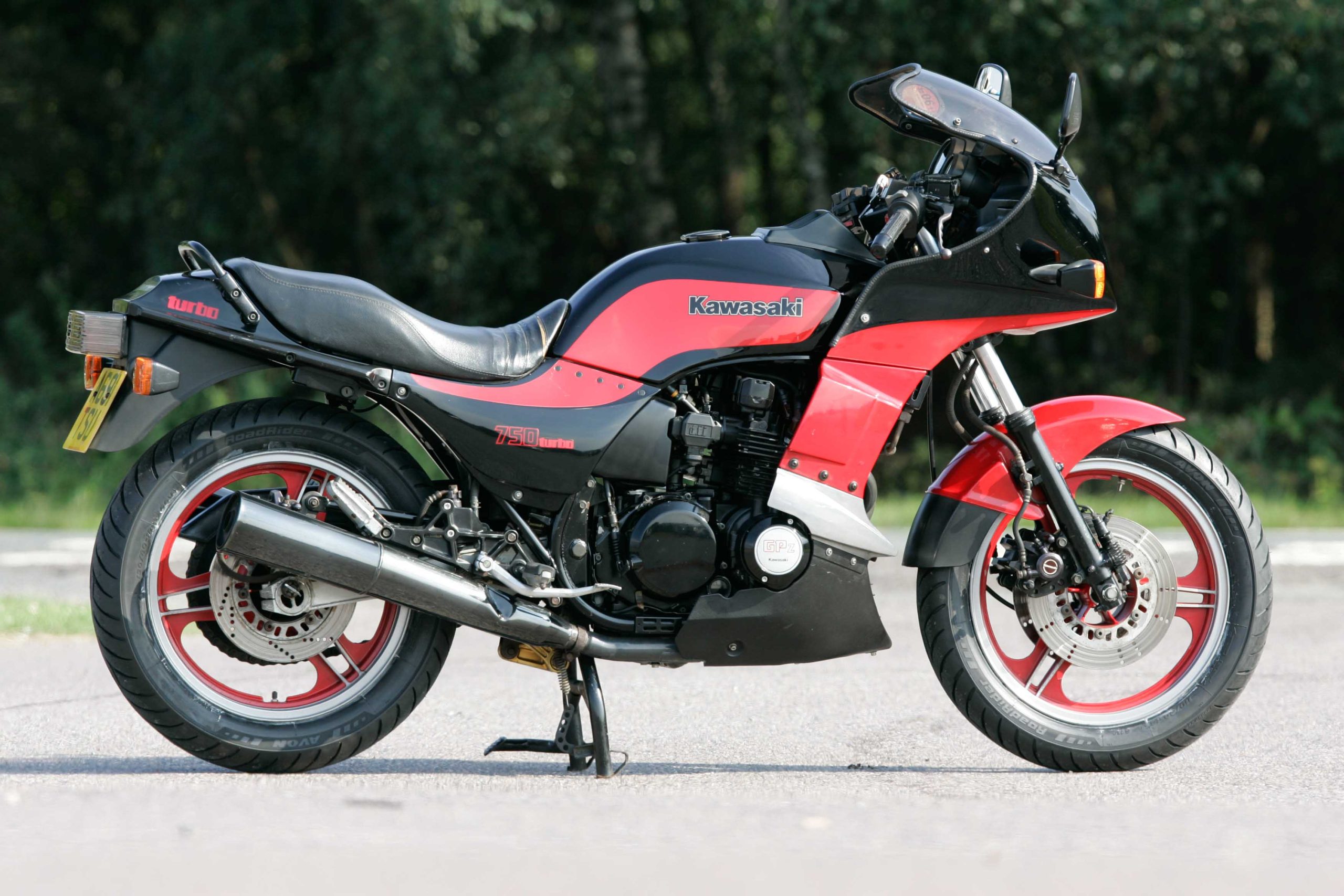

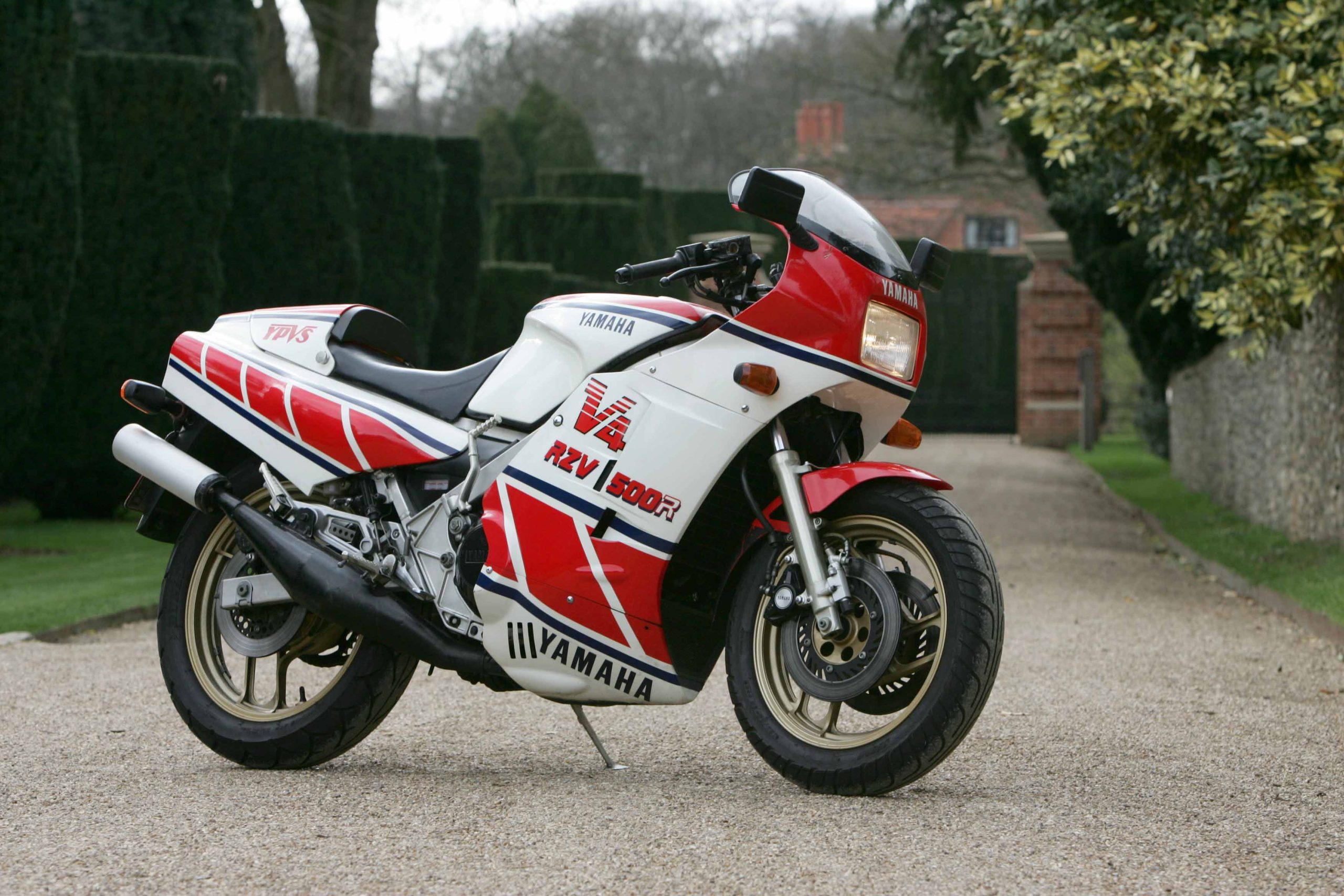






Fantastic!
Had one when I was 20 years old.
I absolutely loved that bike. My first one!
Boy, 50years ago. I am 70 now.
Brought back many fond memories.
Loved mine …… and still have it !!!
I’ll have to get it going again soon as it’s still in my dads garage lol 😂
A friend had the liquid cooled “Moden” version, F2 I think but could be wrong. The only thing I know is that the development never stopped and the YPVS system really did make it a very fast bike at all RPM ranges. I now ride a ZX12R and on twisty roads the RD would still beat me if ridden properly! Great bikes.
Had the 250 back in the 70s and was no1 at that cc . Though do remember it doing almost a ton down the M1 so guess the 350 was restricted. Many happy days were had.
Inspired by the memory of a lad in our village having one prompted me to buy a 350 a few years ago. I was 13 when Dave had his silver 350B and would often be seen on it resplendent in a Steve Baker replica helmet.
My 350 is a US A model fitted with a UK Tank and painted in UK spec Silver dust.
Finally got it running and back on the road last year. A couple of times I’ve ridden down a stretch of road and then back the other way just to get a faint whiff off two stroke smoke!
I have the 250 model ,bought it when I first passed my test,back in 1993 ,restored it in 2019 every time i take it out it always turns heads
You found the big snag that the early RD250/350 has. If the battery gets low the alternator stops charging, because current from the battery is needed to magnetise its rotor. Later models have a permanent-magnet alternator, which is a huge improvement.
My YR350 would surprise with a wheelie in 3rd gear!
My YR350 would surprise with a wheelie in 3rd gear!
Had 2 ,smooth to ride very quick.but I still prefer Suzuki gts .
Brought my rd250b two year’s ago USA import, rode about for a season and popped a piston . Now totally rebuild done by a 2t specialist, hoping to get out soon and enjoy it ,won best in show at a local classic motorcycle show, so hope to ride to more shows a let old enthusiastic people enjoy it .
I bought a 400/4 and put a yshi kit on it absolutely incredable what a bike wish I kept it
I had a YDS7 250, brilliant bike. 👍
You’re never too old, Brian!
I had a 1975 model in Black that I purchased when I passed my bike test in 1978.
I used it for commuting to work and also for social trips.
Every Thursday in the summer months, I used to do a 45 mile each way trip, 2 up with my girlfriend (later my Wife) on the back, to watch the Ipswich Witches speedway team and the RD never let me down.
Lots of very happy memories of my time with the RD350.
Old two-smokes rock. I still have the RD400 I used to ride to school; shared with my little brother who rode it to school a couple of years later. We also both have TDR250s – the “elsie” experience is just as good and a practical machine for modern living.
The Kawasaki Z1s, Z900, Z650, Suzuki GS550/750 were best, but the Yamahas probably sold more and were more widely enjoyed. Current prices tell all.
I had a YDS7 that was subsequently stolen, and I loved that bike so had to get an RD350 next. I bought mine from Dugdales in Cheshire, 2yrs old in 1975, and I have still got it now! Met my wife on it and spent many years doing many miles with a smile on my face.
While deployed to Japan in ’72, my Dad ordered a ’73 RD350 from Wuakaki (sp?) Cycle Center. Was delivered in a crate to our house in the states. He assembled it in the garage and used it for daily commute to Moffet Field. At 10yrs old, it left a significant impression!
Fast fwd to ’84, and I bought it’s ‘follow on’…the RZ350. Used mine as a daily commuter as well. As a kid who grew up riding dirt bikes..and rode street with a dirt mentality, I feel lucky I survived 4 yrs of ownership. BEST BIKES EVER!
I love RD350 since my Schooldays…I have been owned a RD350 High Torque Indian version 1982 Model..Silver Jet colour running in excellent condition.
Thanks for posting about such beautiful beast Yamaha RD350..I m interesting .
Cheers
Sold my Fs1e and bought an RD ,was still 16 so my dad told me to wear a donkey jacket and bait bag so I looked as if I was on my way to work . Mine was P reg spent as much time on one wheel as it did on two , past my test as soon as I was 17 so at least technically legal , even if the wheelies and steppes weren’t , far better than mates GT . Did go through several pistons but did remove the plug and ride home on one cylinder more than once .”Love the smell of 2T in the morning”
Legend bike.
Steve Jones…how many miles are on it?